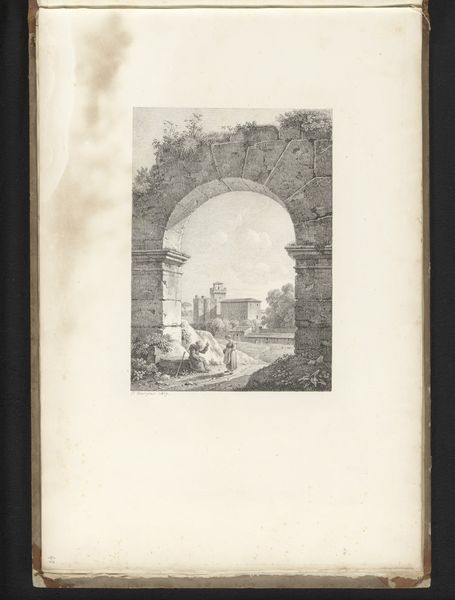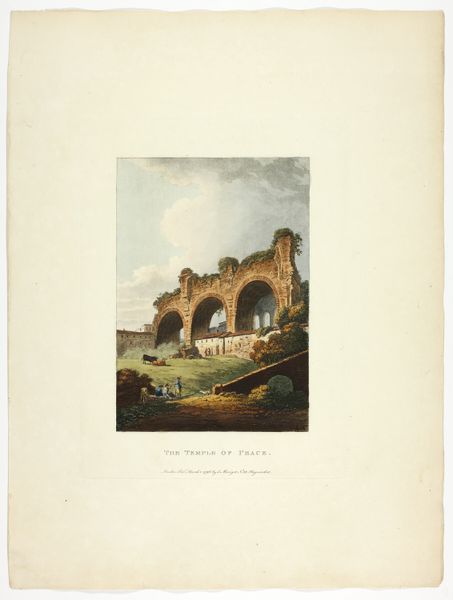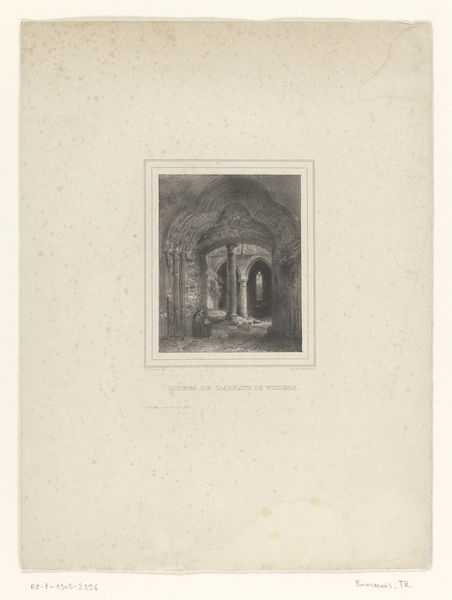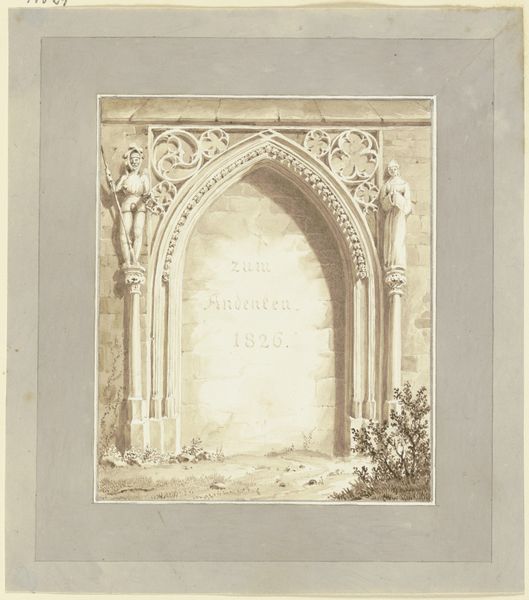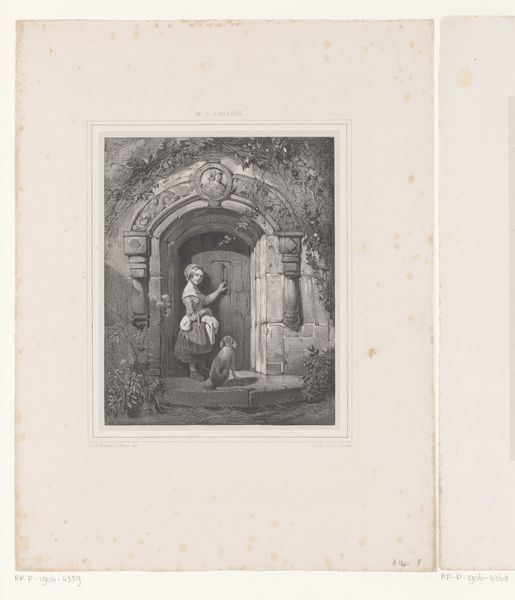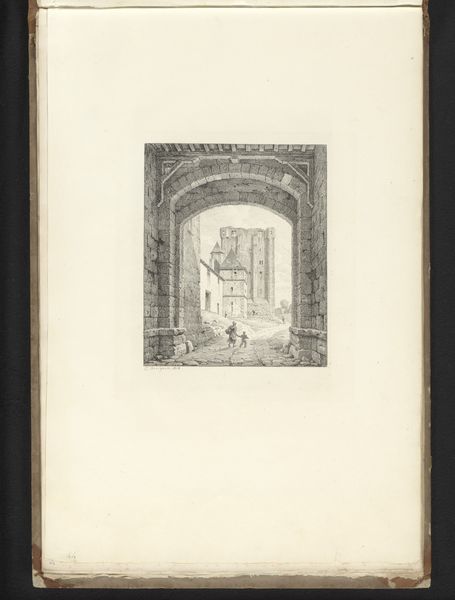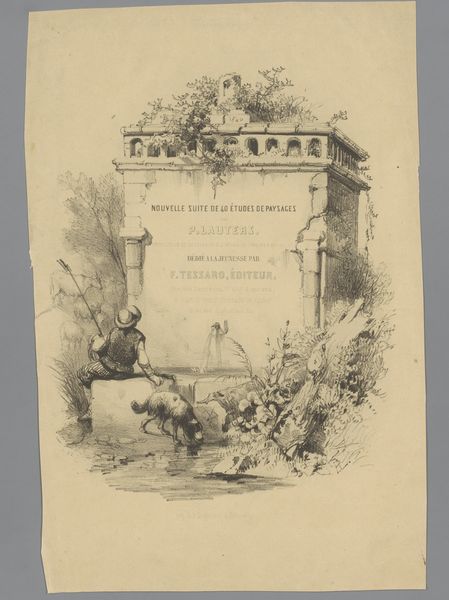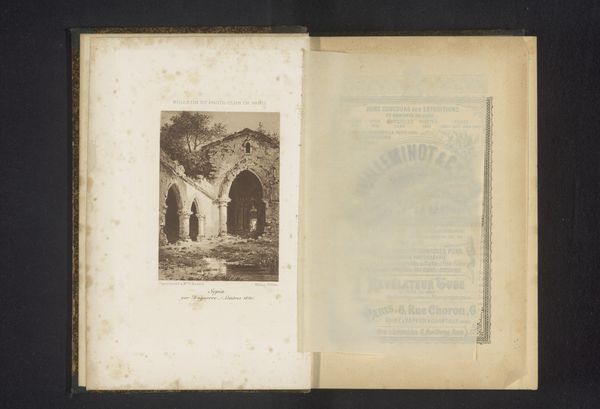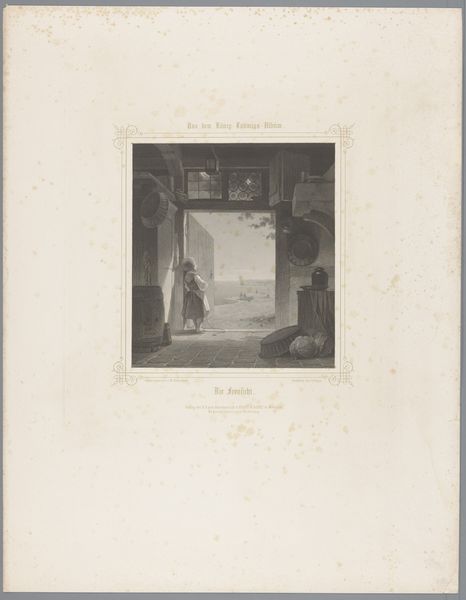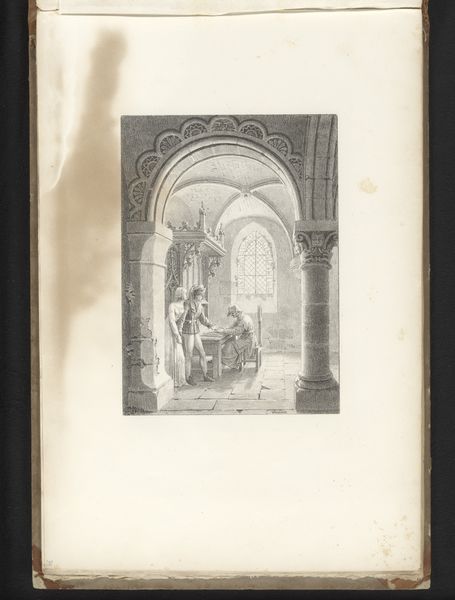
drawing, print, etching, paper, watercolor, engraving
#
drawing
#
water colours
#
ink paper printed
# print
#
etching
#
landscape
#
paper
#
watercolor
#
romanticism
#
cityscape
#
history-painting
#
engraving
Dimensions: 448 × 330 mm (sheet)
Copyright: Public Domain
Curator: What a melancholic scene! M. Dubourg's "Title Page to Ruins of Rome," created around 1796, immediately sets a tone of wistful reflection. Editor: It’s certainly striking. My immediate reaction is to focus on the materiality: the ink bleeding into the paper, the watercolor washes that evoke a specific dampness, the layers of etching that comprise the ornamental borders... these things communicate decay and underscore the very theme itself. Curator: Precisely. The ruin motif is powerfully expressed through the overgrown archway framing the Roman landscape. Consider how arches, often symbols of triumph and power, are here reclaimed by nature. Ivy and flowers overtake what was once a proud structure. Editor: And consider the labor invested in creating that ornament. It's not just an archway; it’s painstakingly rendered foliate forms, carefully etched to resemble stone carving... juxtaposed against the literal breakdown of form that "ruin" suggests. Whose hand labored over this depiction, and what did *they* consume? Curator: The visual weight really contributes to that. Beyond simply showing crumbled stone, Dubourg reminds us that even the greatest civilizations are not immune to time. Note how he positions the viewer – perhaps the wanderer or collector of souvenirs -- as an outside observer looking back. Editor: Absolutely. One cannot look at "watercolor" or "etching" in isolation here; these techniques existed within a specific economic ecosystem tied to paper manufacture, pigment sourcing, print distribution... all these means of production determine our understanding of it now. Curator: The cityscape itself, including recognizable monuments like the Colosseum and what appears to be an obelisk, speaks to a romantic idealization of Rome, one filtered through a lens of nostalgia and loss. The piece uses a conventional vocabulary of form. Editor: Loss is the common experience, I suspect, to this title page... considering that all of that elaborate fabrication through aquatint and line engraving yields not a literal guide, but a poetic rumination on impermanence in relation to material creation and consumption. Curator: The way those forms fade and blend makes you realize nothing gold can stay. The artwork leaves you contemplating the cultural memory embedded in Rome’s decaying grandeur, how history persists and erodes, sometimes simultaneously. Editor: It serves as an aesthetic object while quietly signaling labor, social relationships and consumption. That for me is where its true interest lies.
Comments
No comments
Be the first to comment and join the conversation on the ultimate creative platform.
